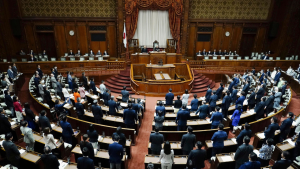Einstein’s theory of general relativity explains that gravity is caused by a curvature of space and time. This concept is evident in Earth’s gravity, which keeps us grounded and explains why objects fall to the floor. On the other hand, in high-energy physics, scientists study tiny, invisible particles that adhere to the laws of quantum mechanics, which involve random fluctuations that affect particle positions and energies. The goal has been to merge these two fields to create a quantum description of gravity, combining the physics of curvature with the uncertainty of quantum mechanics.
A recent study in Nature Physics by physicists at The University of Texas at Arlington delves into the connection between general relativity and quantum mechanics. By using ultra-high energy neutrino particles detected in Antarctica, the team aimed to uncover any quantum effects in gravity. Neutrinos, neutral particles with no mass, were studied as they traveled across the Earth to see if their behavior would be influenced by quantum fluctuations in spacetime. While the team did not find evidence of the expected quantum gravitational effects, their research sheds light on the complex relationship between quantum physics and general relativity.
The international IceCube Collaboration team, which included over 300 scientists from various countries, placed thousands of sensors near the south pole in Antarctica to monitor neutrinos. Over 300,000 neutrinos were analyzed to look for signs of quantum gravity. Despite not observing the anticipated quantum gravitational effects, the team’s study is a significant contribution to understanding the mysterious dynamics at the intersection of quantum physics and general relativity.
This research highlights the ongoing quest to understand the fundamental laws of the universe and the behavior of matter and energy on both large and small scales. The non-observation of quantum effects in the spacetime curvature is a powerful indicator of the complexity and challenges involved in bridging the gap between quantum mechanics and general relativity. As scientists continue to explore this frontier, new experiments and techniques will be developed to delve deeper into the mysteries of the universe.
The study conducted by UTA physicists represents the culmination of nearly a decade of work with the IceCube Observatory. Moving forward, the team is focusing on new experiments that aim to elucidate the origins and properties of neutrinos by utilizing atomic, molecular, and optical physics methodologies. By combining different approaches and technologies, researchers hope to gain a deeper understanding of neutrinos and their role in the universe, ultimately pushing the boundaries of scientific knowledge in the quest to unravel the intricacies of the quantum world and gravity.





